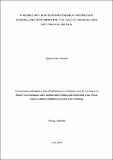| dc.description.abstract | Scientific publications continue to be the primary mode of disseminating research findings
from universities. Although appropriate for other scholars, the method is not accessible to the
general public and policymakers, as the language used is often technical and assumes
knowledge of the theories and techniques in the field, while recommendations focus on further
scientific investigations rather than how to implement findings in real-world settings.
Additionally, the vast majority of publications are not open access and thus require either
paying an average of $300 to view a single file or paying an institutional access fee of $16 000
for institutional access to various publications. Evidence-based decision-making is a pillar for
sustainable development, and therefore, this accessibility gap can have major implications for
achieving development goals. Recently, researchers have utilized platforms such as personal
websites, social media, blogs, and other ICTs to disseminate the key findings of their research
in a succinct and non-technical format. Field dissemination methods such as workshops are
also increasingly utilized, especially in low-resource communities. However, field methods can
be costly and do not provide community members with long-term, repeated access to the
presented information and to newer findings on the same topic. In this study, we aimed to
determine how mobile technologies can be effectively utilized for continuous knowledge
dissemination from researchers to low-resource communities. As a case study, we used the
Monduli and Mto wa Mbu areas in Arusha, Tanzania, and the communities participating in 5
VLIR-UOS projects from NM-AIST, spanning from soil fertility to land use mapping. A user centered design approach was used to determine the requirements from the researchers,
community members, and government extension officers (n = 106). The results indicate that
the application has the potential to enhance research collaboration and dissemination at
Monduli and Mto wa Mbu, and provide insights into the challenges and opportunities
associated with the use of mobile technologies for research knowledge sharing and
dissemination in academic contexts. | en_US |

